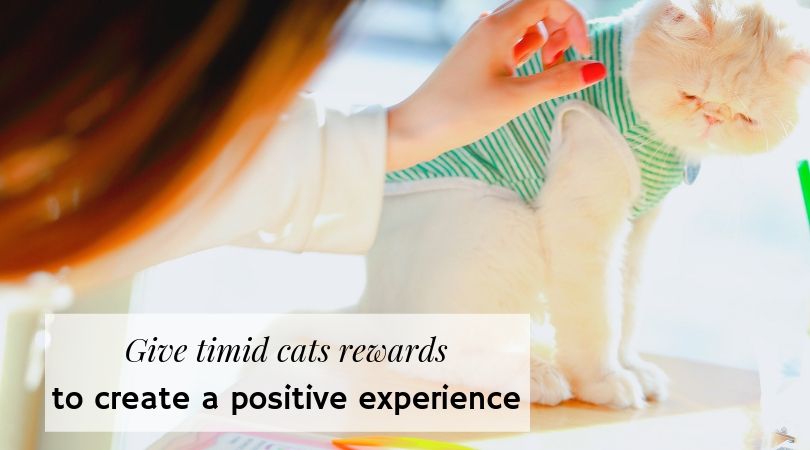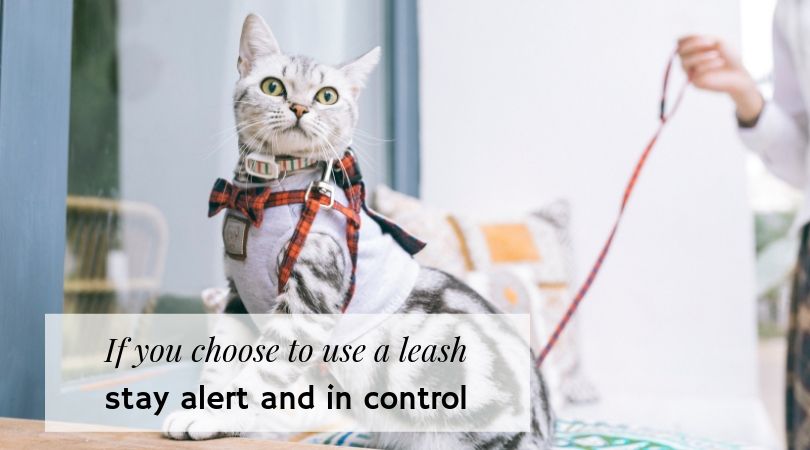A visit to the veterinarian with your cat can potentially be a stressful undertaking for both you and your pet, from wrangling them up at home and getting them into the carrier, to arriving at a hectic hospital lobby. On the other hand, for some people, maybe it’s a fun adventure. Perhaps your cat gets into the carrier without issue and travels well. It can also be fun to see other pets and pet owners at the hospital. Either way, it’s important to remember that not every pet and pet owner have the same experience when going to the veterinary office. The hospital lobby is generally a very busy place that can cause pets, especially cats, to get stressed.
Our goal is to provide a great veterinary experience for everyone visiting our hospital. There is some basic etiquette that pet owners should be aware of and follow. Here are some safety tips and guidelines on bringing your cat to the vet’s office so that everyone can have a comfortable, calm, and safe experience.
Cat Carriers
A carrier is the safest way to transport your kitty to and from the veterinarian. Although it’s possible to leash your cat into the hospital, a carrier is the ideal and recommended method. It provides much more safety for your cat for the entire journey. A carrier protects your cat during the car ride to the hospital. It also keeps them from escaping as you go from your car to the entrance door to the hospital. Although a leash can work for this, leashes are not foolproof, and the carrier is much more secure. The carrier is also a much better option once you get into the hospital lobby as it will shelter and keep your cat away from anything that may startle, irritate, or flat out frighten them. If you have difficulty using a carrier with your cat, please contact our veterinary team as we can provide tips on getting your cat to be more comfortable with using it.
Know Your Cat’s Demeanor
By being aware of your cat’s demeanor and personality, you can take steps to provide them a stress-free visit or greatly reduce the stress they experience at the vet’s office.
Timid Cats
With timid cats, you can use treats or other rewards to make the visit a fun experience for them. Consider asking us about “happy” visits where your cat can just come to say hello. We can feed them treats and scratch their chin, instead of examining them or giving vaccines. They can start to associate the veterinary staff with good experiences and be familiar with us when it’s time for an actual appointment.

Excited, Curious Cats
You should keep an excited or curious cat in the carrier to keep them from finding hiding places in the lobby or wherever you wouldn’t be able to reach them.
Fractious or Fearful Cats
These cats should be handled essentially the same as excited cats: kept inside the carrier. However, you may want to consider calling from the parking lot so that the staff can ensure there is an open exam room so you can bring them directly in without waiting in the lobby. If there is a lot of activity and loud noise in the lobby, with a fearful cat it’s best to avoid that situation altogether.
Very Ill Cats
The safety and comfort of all animals visiting our hospital are vitally important. Any pets that are very sick, especially if contagious, should be kept out of contact with other animals. If you have a very ill cat, we can discuss how to get them to the hospital. For example, you can call from the parking lot so that the staff can make the appropriate arrangements. This could include ushering you and your cat directly into an exam room without any contact with other animals in the lobby.
Kittens
Young kittens will not have their vaccines and preventive medicines administered until they reach a certain age. As such, it’s best practice to keep them from interacting with other animals in the lobby as an extra precautionary step. Your veterinary team will advise you about what is safe for your kitten as she grows.
Basic Training
By working on basic training with your cat you can help keep them under control when interacting with other pets as well as with the veterinary staff. Yes, in fact, cats can be trained! Simple commands such as “stay”, “look”, and “paw” can be learned and are effective ways of keeping your cat calm and in control for various situations.
General Safety Tips
There are other basic safety considerations to keep in mind when you visit us for an appointment:
Don’t Leave Your Pet Unattended
Even in the safety of the carrier, you should never leave your cat unattended. Whether to take a phone call or text, or to talk with a friend, never leave them unattended. It’s a good idea to avoid those distractions altogether while in the lobby so you can keep a watchful eye on your cat.
Don’t Let Go of the Leash

Again, it may just be simple distractions that can cause you to let go of the leash so keep alert. If you do choose to go the route of using a leash instead of a carrier, be sure to check the collar or harness and leash at home to make sure they are working properly.
Don’t Leave Your Pet in a Hot or Cold Car
Despite all of the messaging and awareness, incidents of pets being left in hot or cold cars still occurs. Even on a 70-degree day, the temperature inside a vehicle with windows cracked can reach 90-100 degrees within minutes. Save your errands to do for another trip out.
We hope these tips help you in ensuring a safe and comfortable visit for you and your cat, as well as the other pets visiting the hospital. If you have any questions before scheduling an appointment, don’t hesitate to contact us!

